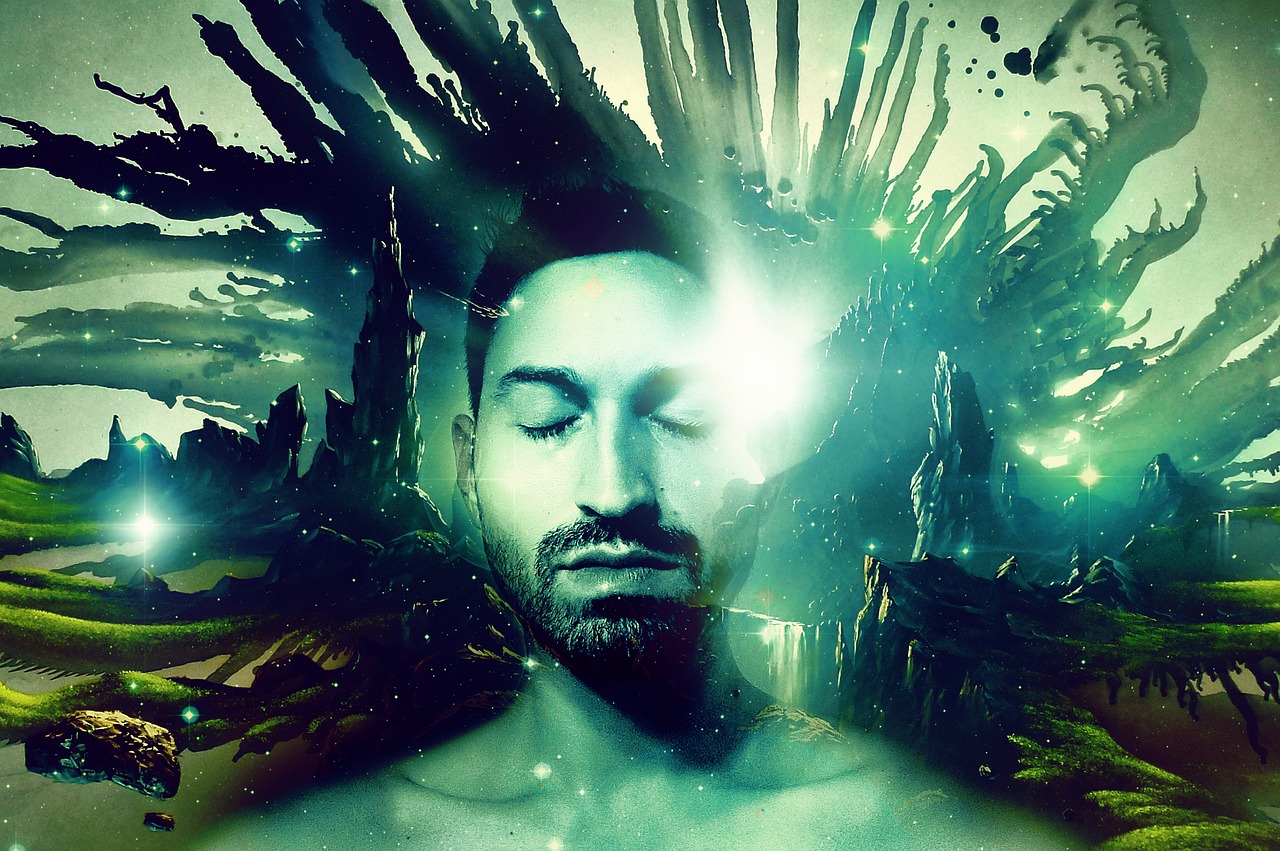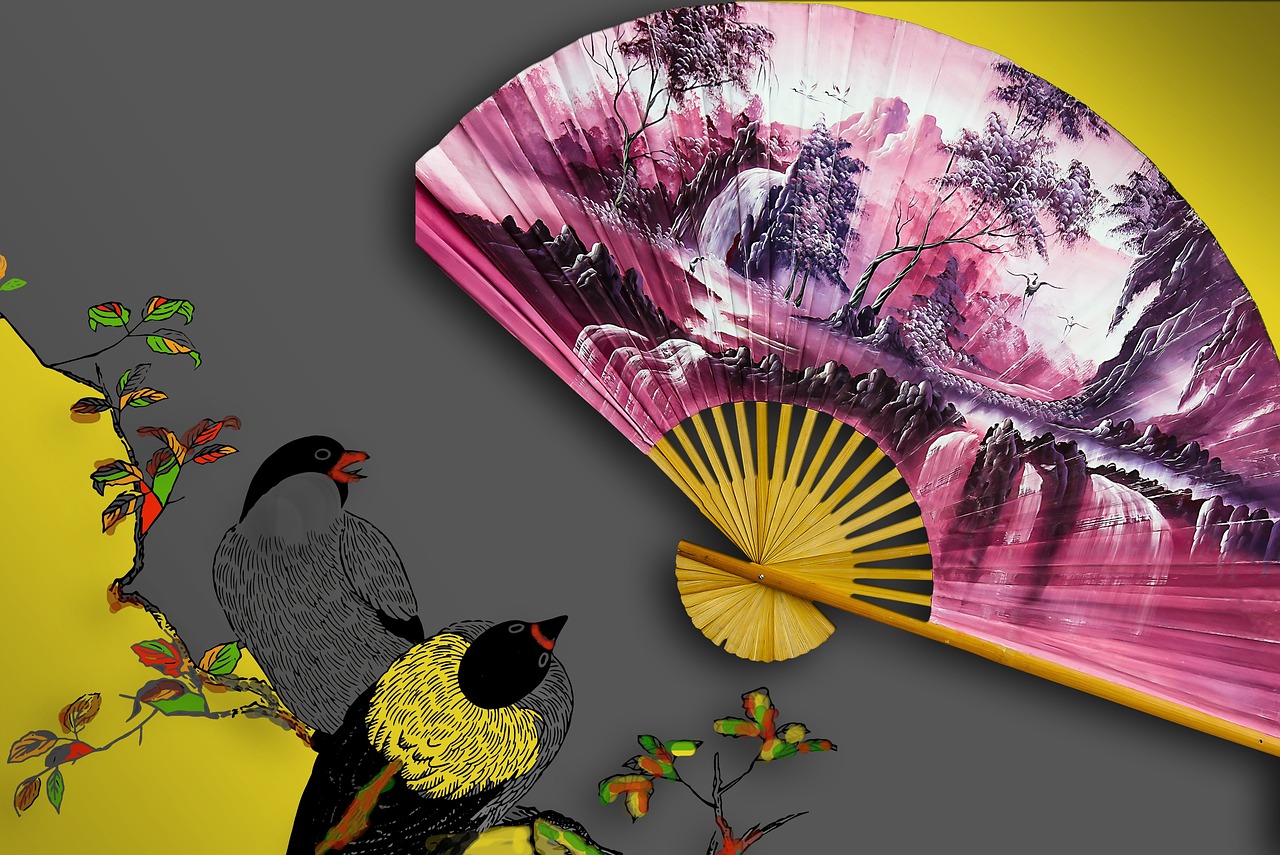Imagination - Bridging Gap between Philosophy and Science
Imagination is often regarded as the playground of the mind, a realm where the impossible becomes possible and where the seeds of innovation are sown. In the intricate dance between philosophy and science, imagination serves as a vital link, enabling us to explore concepts that transcend our immediate reality. Think about it: every groundbreaking scientific discovery, from the theory of relativity to the discovery of penicillin, began with a spark of imagination. Similarly, philosophical inquiries that challenge our understanding of existence and morality often stem from imaginative thought. This article delves into the critical role that imagination plays in connecting these two fields, illustrating how creative thinking fosters innovation and understanding across disciplines.
At its core, imagination is a complex cognitive function that allows individuals to visualize possibilities beyond their immediate surroundings. It is not merely daydreaming; rather, it is a powerful tool that enables us to conceptualize new ideas, formulate hypotheses, and envision scenarios that do not yet exist. In both philosophical reasoning and scientific discovery, imagination enables us to think outside the box, fostering innovative solutions that can lead to profound advancements. The interplay between these domains is not just fascinating but essential, as it encourages a holistic approach to understanding our world.
Throughout history, imagination has been perceived differently across cultures and eras. In ancient times, philosophers like Plato and Aristotle laid the groundwork for how imaginative thought influences knowledge acquisition. Plato's Theory of Forms suggests that our ability to imagine abstract concepts helps bridge the gap between the physical world and ideal forms. This perspective highlights that imagination is not merely a whimsical pursuit but a necessary component of philosophical discourse and scientific reasoning.
On the other hand, Aristotle emphasized the importance of empirical observation, yet he too recognized the role of imagination in conceptualizing ideas. This balance between imaginative thought and empirical evidence is crucial for scientific inquiry and philosophical exploration. As we move into modern times, the significance of imagination becomes even more apparent in scientific arenas, where it drives hypothesis generation and experimentation.
As we explore the role of creativity in this dynamic, it becomes clear that creativity is closely linked to imagination and serves as a catalyst for innovation. The creative processes that emerge from imaginative thinking not only enhance philosophical inquiry but also propel scientific advancements. The synergy between these fields is exemplified in numerous case studies, where imaginative thought has led to significant breakthroughs. For instance, consider how the imaginative exploration of quantum mechanics has transformed our understanding of the universe, merging philosophical questions about existence with scientific inquiry.
In conclusion, imagination is the bridge that connects philosophy and science, facilitating a dialogue that fosters understanding and innovation. By embracing the imaginative capabilities inherent in both disciplines, we can unlock new perspectives and pave the way for future discoveries. As we continue to navigate the complexities of existence, it is essential to recognize the power of imagination as a driving force behind our quest for knowledge.
- What is the role of imagination in scientific discovery?
Imagination allows scientists to visualize possibilities, formulate hypotheses, and create innovative solutions that drive breakthroughs. - How does imagination influence philosophical thought?
Imagination enables philosophers to explore abstract concepts and challenge existing paradigms, fostering deeper understanding. - Can imagination and empirical observation coexist?
Yes, as seen in the works of Aristotle, both imagination and empirical observation are crucial for a comprehensive understanding of the world. - What are some examples of imagination leading to scientific advancements?
Examples include the development of the theory of relativity and breakthroughs in quantum mechanics, both of which stemmed from imaginative inquiry.

The Nature of Imagination
Imagination is not just a whimsical escape from reality; it is a complex cognitive function that empowers us to visualize possibilities far beyond our immediate surroundings. Think of it as a mental playground where ideas can frolic freely, unbound by the constraints of the physical world. This remarkable ability allows individuals to create scenarios, explore hypothetical situations, and innovate solutions that might not be evident through conventional reasoning alone. In essence, imagination acts as a bridge between what is known and what could be, playing a pivotal role in both philosophical reasoning and scientific discovery.
When we engage our imagination, we tap into a reservoir of creativity that fuels innovative thinking. This process is crucial because it allows us to formulate questions, generate hypotheses, and envision outcomes that lead to groundbreaking discoveries. For instance, consider how many scientific breakthroughs began as mere flights of fancy—ideas that seemed outlandish at first but eventually transformed into revolutionary theories or technologies. Imagination is the spark that ignites the flame of inquiry, inviting us to explore the unknown.
Moreover, imagination is not a solitary endeavor; it thrives on collaboration and interaction. When people from different disciplines come together, their diverse imaginative capacities can lead to new insights and solutions. This is particularly evident in interdisciplinary fields, where the fusion of ideas from philosophy and science creates a rich tapestry of understanding. For example, when a philosopher contemplates the ethical implications of a scientific advancement, they use their imagination to foresee potential consequences, thereby enriching the scientific discourse.
In summary, imagination is a dynamic and essential aspect of human cognition that fosters innovation and understanding across various domains. It enables us to transcend the limitations of our current knowledge and explore the vast expanse of possibilities. Whether in philosophy or science, the capacity to imagine not only enhances our comprehension of complex concepts but also drives the pursuit of knowledge itself.
- What is the role of imagination in scientific discovery? Imagination allows scientists to hypothesize and visualize potential outcomes, which is critical for experimentation and innovation.
- How does imagination influence philosophical thought? Philosophers use imagination to explore abstract concepts and ethical dilemmas, helping to bridge gaps in understanding.
- Can imagination be developed or enhanced? Yes, engaging in creative activities, such as art or writing, can enhance one's imaginative capabilities.
- Why is interdisciplinary collaboration important for imagination? When individuals from different fields collaborate, they bring unique perspectives that can inspire new ideas and solutions.

Historical Perspectives
Throughout history, the concept of imagination has been a fascinating subject that bridges the realms of philosophy and science. Different cultures and eras have interpreted imagination in unique ways, revealing its profound impact on human thought. From ancient civilizations to contemporary society, imagination has been a driving force behind both philosophical inquiry and scientific exploration. It is essential to understand how these interpretations have evolved over time, as they shape our current understanding of creativity and innovation.
In ancient times, imagination was often seen as a divine gift, a means through which humans could connect with the cosmos. Philosophers like Plato and Aristotle laid the groundwork for future explorations of imagination, each contributing distinct perspectives that would influence generations to come. Their teachings emphasized the importance of imaginative thought in acquiring knowledge and understanding the world around us.
For instance, Plato's allegory of the cave illustrates how imagination can lead to enlightenment. He argued that the shadows on the cave wall represent mere perceptions, while the journey out of the cave symbolizes the philosopher's pursuit of true knowledge, achieved through imaginative reasoning. On the other hand, Aristotle took a more empirical approach, acknowledging that while observation is crucial, imagination plays a vital role in forming concepts and theories. This balance between observation and imagination is what allows science to progress.
As we move through history, we see that the Renaissance period sparked a renewed interest in the interplay between imagination and scientific inquiry. Thinkers like Leonardo da Vinci exemplified this connection, blending art and science through their imaginative prowess. Da Vinci's sketches and inventions were not merely products of observation; they were born from a rich imagination that envisioned possibilities beyond the existing knowledge of his time.
In the modern era, the role of imagination has only grown more critical. The scientific revolution brought forth a wave of new ideas, driven by imaginative hypotheses that challenged established norms. Figures like Isaac Newton and Albert Einstein relied heavily on imaginative thinking to formulate groundbreaking theories that redefined our understanding of physics. Their ability to visualize complex concepts allowed them to make significant advancements that continue to influence scientific thought today.
To summarize the historical perspectives on imagination, we can look at the following key points:
- Ancient Philosophy: Imagination as a divine connection to knowledge.
- Renaissance Innovation: The fusion of art and science through imaginative exploration.
- Modern Scientific Breakthroughs: Imagination as a catalyst for revolutionary ideas.
In conclusion, the historical perspectives on imagination reveal its essential role in shaping philosophical and scientific thought. By examining how different eras and cultures have understood imagination, we can appreciate its power as a bridge that connects the abstract with the empirical. This understanding not only enriches our appreciation of creativity but also inspires us to harness the power of imagination in our own pursuits, whether in philosophy, science, or beyond.

Imagination in Ancient Philosophy
Imagination has always been a powerful force in human thought, especially in the realm of ancient philosophy. Philosophers like Plato and Aristotle recognized that imagination is not merely a fanciful escape but a crucial component in the quest for knowledge and understanding. They explored how imaginative thought could help bridge the gap between the tangible world and abstract concepts, laying the groundwork for both philosophical discourse and scientific inquiry.
Plato, for instance, proposed his famous Theory of Forms, which posits that the physical world we perceive is just a shadow of a higher reality of ideal forms. He believed that imagination plays a vital role in helping individuals grasp these abstract ideals. Through imaginative thought, one could transcend the limitations of sensory experience and contemplate the essence of concepts like beauty, justice, and truth. This imaginative leap is akin to a painter envisioning a masterpiece before putting brush to canvas; it’s about seeing beyond the present to understand deeper truths.
On the other hand, Aristotle took a more empirical approach to knowledge. He emphasized the importance of observation and experience in understanding the world. However, he also acknowledged that imagination is critical in the process of conceptualization. Aristotle argued that while we gather information through our senses, it is our imagination that allows us to form ideas and hypotheses based on those observations. This balance between empirical evidence and imaginative reasoning is essential for both scientific inquiry and philosophical exploration.
In ancient philosophy, the interplay between imagination and reasoning can be summarized in the following ways:
- Imagination as a Tool for Understanding: Both Plato and Aristotle viewed imagination as a means to access higher knowledge and abstract concepts.
- The Role of Creativity: Imaginative thought fosters creativity, leading to new ideas and perspectives in philosophical discourse.
- Bridging the Physical and the Abstract: Imagination allows philosophers to connect the observable world with abstract ideals, enhancing our understanding of both realms.
Ultimately, the insights of ancient philosophers highlight that imagination is not a mere embellishment of thought but a foundational element in the pursuit of knowledge. By tapping into our imaginative faculties, we can explore the depths of philosophical inquiry and scientific discovery, paving the way for future generations to continue this vital dialogue.
Q: How did ancient philosophers view the role of imagination?
A: Ancient philosophers like Plato and Aristotle saw imagination as a crucial tool for understanding abstract concepts and bridging the gap between empirical observation and higher ideals.
Q: What is Plato's Theory of Forms?
A: Plato's Theory of Forms suggests that the physical world is a mere shadow of a higher reality of ideal forms, and imagination helps us grasp these abstract concepts.
Q: How did Aristotle incorporate imagination into his philosophy?
A: Aristotle recognized the importance of empirical observation but also acknowledged that imagination is essential for conceptualizing ideas based on those observations.

Plato's Theory of Forms
Plato's Theory of Forms is a fascinating concept that dives deep into the essence of reality and knowledge. At its core, this theory posits that beyond our tangible world lies a realm of ideal forms or ideas—perfect and unchanging archetypes of everything we encounter in our physical existence. Imagine a world where every object, idea, or quality you see is merely a shadow of its true form. For example, consider the concept of beauty. In our world, we see beautiful things—like a stunning sunset or a magnificent painting—but according to Plato, these are mere reflections of the ultimate Form of Beauty, which exists in a higher, abstract realm.
This idea serves as a bridge between imagination and understanding. Plato believed that our ability to imagine these ideal forms allows us to grasp concepts that are otherwise difficult to comprehend. When we engage our imagination, we can transcend the limitations of the physical world and connect with these higher realities. This is particularly significant in both philosophical discourse and scientific inquiry, as it encourages us to think beyond the obvious and explore deeper truths.
In Plato's view, the process of learning is not merely about accumulating information but is an imaginative journey towards recognizing these forms. For instance, when a student learns about justice, they are not just memorizing definitions; they are engaging with the Form of Justice itself, which requires a leap of imagination to understand fully. This imaginative engagement is crucial because it shapes the way we interpret our experiences and informs our reasoning.
Furthermore, Plato's Theory of Forms emphasizes the importance of dialectical reasoning. Through dialogues, he illustrated how questioning and contemplating these forms can lead to greater understanding. This method not only fosters philosophical thought but also parallels the scientific method, where hypotheses are tested against observed phenomena. Both realms rely on a creative interplay of imagination and critical thinking.
To summarize, Plato's Theory of Forms highlights the essential role of imagination in bridging the gap between the physical and the ideal. It invites us to explore a world beyond what we see, encouraging a deeper understanding of abstract concepts that shape our reality. In doing so, it lays a foundation for both philosophical inquiry and scientific exploration, illustrating how interconnected these fields truly are.
- What is Plato's Theory of Forms? Plato's Theory of Forms suggests that beyond our physical world, there exists a realm of ideal forms that represent the true essence of all things.
- How does imagination relate to Plato's Theory? Imagination allows individuals to conceptualize and understand these ideal forms, bridging the gap between the physical and the abstract.
- Why is this theory important for philosophy and science? It emphasizes the significance of imaginative thinking in both fields, as it fosters deeper understanding and innovative thinking.

Aristotle's Empirical Approach
Aristotle, one of the most influential philosophers in history, adopted a unique stance when it came to understanding the world around us. His empirical approach emphasized observation and experience as the cornerstones of knowledge. Unlike his mentor, Plato, who leaned heavily on abstract forms and ideals, Aristotle believed that true understanding comes from engaging with the physical world. This means that imagination, while important, must be tempered with reality and grounded in what we can observe.
In Aristotle's view, imagination plays a critical role in the process of conceptualization. He argued that our minds use imaginative faculties to form ideas based on sensory experiences. For instance, when we observe a tree, our imagination helps us not only to recognize it as a tree but also to categorize it, understand its properties, and relate it to other concepts. This process illustrates how imagination and empirical observation work hand in hand, creating a dynamic interplay that enriches our understanding of both philosophy and science.
Aristotle categorized knowledge into different types, primarily focusing on practical knowledge (how to do things) and theoretical knowledge (understanding concepts). He believed that while theoretical knowledge could be enhanced through imaginative thinking, practical knowledge required a direct engagement with the world. This distinction is vital because it highlights that while imagination can inspire scientific inquiry, it must be validated through rigorous observation and experimentation.
To illustrate this point, consider Aristotle's studies in biology. He meticulously observed marine life, documenting his findings in a systematic manner. His imaginative ability to hypothesize about the behaviors and characteristics of different species was crucial, but it was his empirical observations that provided the foundation for his conclusions. This method of combining imagination with observation is a hallmark of scientific inquiry that persists to this day.
Moreover, Aristotle's empirical approach can be summarized in the following key aspects:
- Observation: Direct engagement with the world to gather data.
- Classification: Using imagination to categorize and relate different phenomena.
- Hypothesis Formation: Imagining possibilities based on observed data.
- Validation: Testing imaginative ideas through rigorous experimentation.
This balance between imagination and empirical observation is not just a relic of Aristotle's time; it remains relevant in today's scientific methodologies. The ability to dream and envision possibilities is essential, but those dreams must be anchored in observable reality to foster genuine understanding and advancement. Aristotle's legacy teaches us that while imagination may ignite the spark of inquiry, it is the empirical approach that fuels the fire of discovery.
- What is Aristotle's empirical approach?
Aristotle's empirical approach emphasizes knowledge gained through observation and experience, advocating for a balance between imaginative thinking and empirical evidence. - How does imagination contribute to scientific inquiry?
Imagination allows scientists to hypothesize and conceptualize new ideas, but these ideas must be tested and validated through empirical observation. - Why is Aristotle considered a pivotal figure in both philosophy and science?
Aristotle's methodologies laid the groundwork for scientific inquiry and philosophical discourse, demonstrating the interconnectedness of the two fields through observation and imagination.

Imagination in Modern Science
In the realm of modern science, imagination isn't just a whimsical notion; it's a fundamental component that drives innovation and discovery. Think about it: every groundbreaking scientific theory or invention began with a spark of imagination. Scientists often find themselves at the intersection of the known and the unknown, where their ability to envision possibilities beyond current understanding becomes crucial. This imaginative leap is what leads to the formulation of hypotheses, the design of experiments, and ultimately, the unveiling of new knowledge.
Take, for example, the world of quantum physics. The very principles that govern this field are not easily observable in our everyday lives. Theoretical physicists like Albert Einstein and Niels Bohr relied heavily on imaginative thinking to conceptualize phenomena that were beyond the reach of direct observation. Einstein's thought experiments, such as imagining riding alongside a beam of light, allowed him to formulate theories that would revolutionize our understanding of space and time.
Moreover, imagination plays a vital role in interdisciplinary collaboration, where scientists from different fields come together to tackle complex problems. For instance, the integration of artificial intelligence and biotechnology has led to revolutionary advancements in medicine. Researchers envision new ways to manipulate genetic material or develop algorithms that can predict disease outbreaks, showcasing how imaginative thought can bridge gaps between seemingly disparate fields. This synergy not only fosters innovation but also enriches the scientific discourse, allowing for a more holistic approach to understanding and solving global challenges.
To illustrate the impact of imagination in modern science, consider the following examples:
- CRISPR Technology: The development of CRISPR as a gene-editing tool was born from scientists' imaginative ability to visualize the potential of modifying DNA sequences. This breakthrough has opened up new avenues for genetic research and therapy.
- Space Exploration: The ambitious goals of space missions, such as sending humans to Mars, require scientists to imagine not just the technology needed but also the physiological and psychological challenges that astronauts will face.
- Climate Change Solutions: Addressing climate change demands imaginative solutions that integrate sustainable practices across various sectors, from renewable energy to urban planning.
These examples underscore the profound impact of imagination in shaping scientific inquiry and discovery. Without the ability to think creatively, many of the advancements we take for granted today would not exist. As we continue to push the boundaries of what is possible, it's essential to nurture this imaginative spirit in the scientific community and beyond.
Q1: How does imagination influence scientific research?
A1: Imagination allows scientists to envision new possibilities, formulate hypotheses, and design innovative experiments, which are essential for advancing knowledge.
Q2: Can imagination be trained or developed?
A2: Yes, like any skill, imagination can be nurtured through practices such as brainstorming, engaging in creative activities, and exposing oneself to diverse fields of knowledge.
Q3: Are there any specific techniques to enhance imaginative thinking in science?
A3: Techniques such as mind mapping, role-playing scenarios, and collaborative brainstorming can help enhance imaginative thinking and foster innovation.

The Role of Creativity
Creativity is not just a buzzword; it's the lifeblood of innovation and discovery. When we think about the role of creativity in bridging the gap between philosophy and science, we uncover a fascinating landscape where ideas flourish and boundaries dissolve. Creativity allows us to extend our imaginations beyond the confines of conventional thought, enabling us to explore uncharted territories in both philosophical inquiry and scientific research. It's like having a key that unlocks doors to new realms of understanding, where the impossible becomes possible.
At its core, creativity is deeply intertwined with imagination. While imagination allows us to visualize possibilities, creativity is the action that brings those visions to life. It’s the process of taking abstract ideas and transforming them into tangible outcomes. For instance, consider how scientists use creative thinking to formulate hypotheses. They don’t just rely on existing knowledge; they imagine what could be, experimenting with ideas that might seem outlandish at first. This interplay between imagination and creativity is essential for driving progress in both philosophy and science.
When we delve into the realm of creativity, we can identify several key aspects that enhance our understanding of its role in these fields:
- Problem-Solving: Creativity equips individuals with the ability to approach problems from multiple angles, leading to innovative solutions that might not be immediately apparent.
- Interdisciplinary Collaboration: The fusion of creative ideas from different disciplines often results in groundbreaking advancements. Think of how the collaboration between artists and scientists has led to innovations in technology and design.
- Expanding Perspectives: Creative thinking encourages individuals to challenge their assumptions and explore new viewpoints, enriching philosophical discussions and scientific methodologies.
Moreover, creativity plays a crucial role in fostering an environment where questioning and exploration thrive. In philosophical discourse, it allows for the exploration of abstract concepts and ethical dilemmas, pushing the boundaries of traditional thought. In science, it fuels experimentation and the development of new theories that can revolutionize our understanding of the universe. The relationship between creativity and these fields is reciprocal; as philosophy inspires new questions, science provides the tools to explore them, and creativity weaves the two together.
To illustrate the power of creativity in action, consider the groundbreaking work of figures like Albert Einstein. His imaginative thought processes led him to question the established norms of physics, ultimately resulting in the formulation of the theory of relativity. This is a prime example of how creative thinking can lead to monumental shifts in understanding, bridging the gap between philosophical inquiry about the nature of reality and scientific exploration of the cosmos.
In conclusion, creativity is not merely an accessory to imagination; it is an essential component that drives both philosophical and scientific advancements. By embracing creativity, we open ourselves up to a world of possibilities, where the synergy between imagination and innovation can lead to profound discoveries and insights. The next time you find yourself pondering a complex question, remember that creativity is your ally, guiding you through the labyrinth of thought and inquiry.
Q: How does creativity influence scientific discoveries?
A: Creativity allows scientists to think outside the box, leading to innovative hypotheses and experimental designs that can result in groundbreaking discoveries.
Q: Can creativity be cultivated?
A: Yes, creativity can be nurtured through practice, exposure to diverse ideas, and by fostering an environment that encourages exploration and experimentation.
Q: What role does imagination play in philosophical discussions?
A: Imagination enables philosophers to explore abstract concepts and ethical dilemmas, facilitating deeper understanding and innovative thinking in their discourse.

Interdisciplinary Connections
When we think about the realms of philosophy and science, it’s easy to imagine them as two distinct islands, each with its own set of beliefs and methodologies. However, these disciplines are more like a vibrant archipelago, where the bridges connecting them are built on the foundation of imagination and creativity. The interplay between philosophical thought and scientific inquiry is rich and complex, often leading to groundbreaking advancements that neither field could achieve in isolation.
Consider how the philosophical questions about existence, knowledge, and ethics can drive scientific inquiry. For instance, the ethical implications of genetic engineering raise profound philosophical questions that require imaginative thinking to navigate. Scientists must not only understand the technical aspects of their work but also engage with the broader implications of their discoveries. This is where imagination becomes a crucial tool, allowing scientists and philosophers alike to envision potential futures, weigh consequences, and explore alternative scenarios.
Moreover, history is replete with examples where the fusion of these disciplines has led to significant breakthroughs:
- Albert Einstein and his theory of relativity, which was influenced by philosophical ideas about time and space.
- Charles Darwin, whose evolutionary theory was shaped by philosophical debates about the nature of life and existence.
- Stephen Hawking, who often blended scientific inquiry with philosophical musings about the universe and human existence.
This synergy is not just theoretical; it manifests in practical applications as well. For example, interdisciplinary research groups often bring together philosophers and scientists to tackle complex problems like climate change or artificial intelligence. In these settings, the imaginative insights of philosophers can guide scientists in considering ethical implications, while scientific discoveries can challenge and refine philosophical theories.
Furthermore, educational institutions are beginning to embrace this interdisciplinary approach, recognizing that the future innovators will need to be adept in both scientific reasoning and philosophical inquiry. Courses that combine science and philosophy are being developed, encouraging students to think critically and creatively about the world around them. This kind of education fosters a mindset that values curiosity and imaginative problem-solving, equipping future leaders to navigate the complexities of our rapidly changing world.
In essence, the connections between philosophy and science are not merely beneficial; they are essential. As we face unprecedented challenges in our society, the ability to think imaginatively and creatively across disciplines will be crucial in forging innovative solutions. By embracing this interdisciplinary dialogue, we can unlock new pathways of understanding and exploration, ultimately enhancing both our philosophical insights and scientific advancements.
- How does imagination influence scientific research?
Imagination allows scientists to formulate hypotheses, envision experiments, and explore possibilities beyond current knowledge, leading to innovative discoveries. - Can philosophy contribute to scientific advancements?
Absolutely! Philosophy raises important questions about ethics, existence, and understanding that can guide scientific inquiry and application. - Why is interdisciplinary collaboration important?
Collaborating across disciplines fosters diverse perspectives, encourages creative problem-solving, and leads to more holistic solutions to complex issues.

Case Studies in Imagination
When we think about the profound impact of imagination on both scientific discoveries and philosophical debates, several case studies come to mind that beautifully illustrate this connection. One striking example is the work of Albert Einstein, whose ability to visualize complex concepts led to groundbreaking theories in physics. Einstein famously said, "Imagination is more important than knowledge," highlighting how imaginative thinking can propel scientific inquiry beyond the limits of existing knowledge.
Einstein's thought experiments, such as the concept of riding alongside a beam of light, allowed him to explore the implications of his theories in ways that pure mathematical equations could not. This imaginative approach not only reshaped our understanding of time and space but also emphasized the necessity of creativity in scientific exploration. Without his imaginative insights, the theory of relativity might have remained undiscovered.
Another compelling case study is that of Marie Curie, whose pioneering research in radioactivity was driven by her imaginative curiosity. Curie's ability to envision the potential applications of radioactive elements led to significant advancements in both science and medicine. Her imaginative foresight in recognizing the therapeutic potential of radiation opened new avenues for cancer treatment, demonstrating how imagination can lead to real-world solutions that save lives.
Furthermore, we can look at Charles Darwin and his theory of evolution. Darwin's journey on the HMS Beagle was not just about observation; it was also about imaginative interpretation of the natural world. His ability to synthesize observations from various ecosystems and imagine the mechanisms of natural selection allowed him to craft a theory that fundamentally changed our understanding of biology. This case illustrates how imagination can bridge the gap between mere observation and profound understanding.
In the realm of philosophy, we can reference the work of Immanuel Kant. Kant's critical philosophy, particularly in his "Critique of Pure Reason," involved imaginative constructs that sought to reconcile the empirical and the rational. His ideas about the categories of understanding showcase how imagination can shape philosophical discourse. By imagining the structures through which we perceive the world, Kant opened up new avenues for philosophical inquiry that continue to influence thought today.
These case studies reveal a common thread: imagination serves as a catalyst for both scientific and philosophical breakthroughs. Whether it's through thought experiments, innovative research, or imaginative interpretations, the ability to envision possibilities beyond the immediate reality is what drives progress in both fields. As we continue to explore the interconnectedness of imagination, philosophy, and science, we can appreciate how these elements work together to enhance our understanding of the world.
- How does imagination contribute to scientific discovery?
Imagination allows scientists to visualize hypotheses, conduct thought experiments, and explore concepts that are not immediately observable, leading to innovative breakthroughs. - Can imagination influence philosophical thought?
Absolutely! Imagination helps philosophers conceptualize abstract ideas and frameworks, bridging the gap between empirical observations and theoretical constructs. - What are some practical ways to enhance imagination in scientific research?
Techniques such as brainstorming, engaging in interdisciplinary collaboration, and employing creative problem-solving strategies can significantly enhance imaginative thinking in research.
Frequently Asked Questions
-
What is the role of imagination in philosophy?
Imagination plays a crucial role in philosophy by allowing individuals to conceptualize abstract ideas and explore possibilities beyond their immediate experiences. It helps bridge the gap between tangible reality and ideal forms, as seen in Plato's Theory of Forms, where imagination aids in understanding complex concepts.
-
How does imagination contribute to scientific discovery?
In science, imagination is essential for generating hypotheses and designing experiments. It enables scientists to visualize potential outcomes and think creatively about solutions to complex problems. This imaginative thinking is often the driving force behind groundbreaking discoveries and innovations.
-
Can you give examples of imagination in historical philosophy?
Certainly! Ancient philosophers like Aristotle recognized the importance of imagination in knowledge acquisition. While he emphasized empirical observation, he also acknowledged that imaginative thought is necessary for forming ideas and concepts that lead to deeper understanding in both philosophical and scientific contexts.
-
What is the connection between creativity and imagination?
Creativity and imagination are closely linked; imagination serves as the foundation for creative thought. Creative processes often involve reimagining existing ideas or concepts, leading to innovative breakthroughs in both philosophy and science. This synergy promotes new perspectives and advancements across disciplines.
-
How does interdisciplinary collaboration benefit from imagination?
Interdisciplinary collaboration thrives on imaginative thinking, as it allows experts from different fields to merge their insights and approaches. This blending of perspectives can lead to significant advancements, demonstrating how creativity fuels innovation and enhances understanding in both philosophical and scientific realms.
-
What are some real-world examples of imagination leading to breakthroughs?
There are numerous case studies where imagination has played a pivotal role in scientific discoveries and philosophical debates. For instance, the development of theories in physics often relies on imaginative concepts, such as Einstein's thought experiments, which revolutionized our understanding of space and time.



















